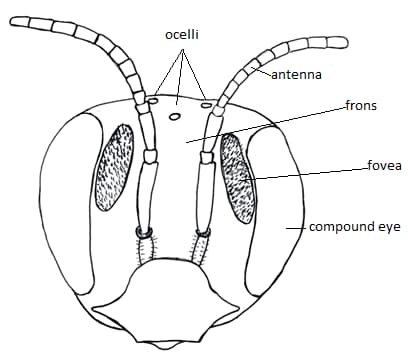How Many Eyes Do Bees Have? Interesting Facts About Bees
We think that it will be useful to learn some numerical facts about honey, which is among the indispensable breakfasts, and the bees, which are its producers.
How Many Eyes Do Bees Have?
Bees have three-pointed eyes on the top of their head. These allow the bee to see closely. In addition, there are hexagonal eyes called honeycomb eyes on both sides of the head. These eyes are 5000 in worker bees and 7000 in drones.

Other Information About Bees
1. It is known that the ancestors of modern bees evolved about 100 million years ago. Honey bees are close cousins to ants, and both groups evolved from a common ancestor with wasps.
2. Honeybees, known as Apis mellifera, are environmentally friendly and critical for plant pollination.
3. The only insect that produces a food that humans consume as food is the bee.
4. Honey is the only type of food that contains the enzymes, vitamins, minerals and water necessary to sustain life. It is also the only food that contains a rare antioxidant called “pinocembrin” that contributes to brain function.
5. Honey bees have 6 legs, 2 compound eyes consisting of hundreds of tiny lenses located on both sides of their heads, 3 simple eyes located on their heads, 2 pairs of wings, 1 nectar sac and a stomach.
6. Honey bees have 170 olfactory receptors. On the other hand, fruit flies have 62 odor receptors and mosquitoes have 79 odor receptors. Exceptional olfactory abilities include detecting signals to recognize relatives, signals for social communication within the herd, and signals for finding food. Their sense of smell is so sensitive that they can detect hundreds of different scents and whether a flower has pollen or nectar from meters away.
7. Honey bees can flap their wings 200 times per second, which is the reason for their distinctive “buzzing” sound. A honey bee can fly up to 10 kilometers without stopping in this way, and its flight speed is about 20 kilometers per hour.
8. An average worker honey bee can produce 1/12 of a teaspoon of honey in its entire lifetime. In other words, 1 teaspoon of honey is equal to the total amount of honey produced by 12 bees in their lifetime.
9. A hive of bees travels a total of 120,000 kilometers to produce 1 kilogram of honey. This is equivalent to about 3 times the circumference of the Earth.
10. A bee can obtain the energy that enables it to travel enough to circumnavigate the Earth once, from only 28 grams of honey.
11. A honey bee visits about 50-100 different flowers each time it leaves the hive.
12. The brains of honey bees are oval and the size of a sesame seed. However, they can still learn and remember a great deal and perform complex operations that provide travel and directional efficiency.
13. There are 20,000-60,000 bees and 1 queen bee in a bee colony. Worker honey bees are female and live for about 6 weeks, doing all the work in the hive.
14. The queen bee can live up to 5 years and is the only individual capable of laying fertilized eggs. During periods when the queen bee cannot grow, bees called false queens can lay eggs instead. However, since these eggs are not fertilized, they always become males. If conditions do not improve, the entire colony eventually becomes male and thus the colony perish. It is the queen bee that works the hardest during the summer, because during this period the hive needs the most energy and during this period the queen bee lays 2500 eggs a day.
15. Male bees are larger than worker and female honey bees, they do not have stingers and do not do any work. All they do is reproduce.
16. Each bee in a colony has a distinctive odor.
17. Only female worker bees have stings and only sting when they feel threatened. Bees do not use their stingers once, as is believed, they can use them many times. If they can’t get their needles out when they stab, they die. However, this only happens when they sting thick-skinned mammals or reptiles, invertebrates rarely encountering this problem. Queen bees also have stingers. However, the queen bee does not come out of the hive and do not see its defense duty.
18. If a person is not allergic, 1100 bees must sting at the same time in order to die from bee stings.
19 Honey bees communicate with each other through a dance method called the “swing dance”.
20. During the winter, the bees feed on the honey they produce during the warmer months. They try to keep themselves and the queen warm by clustering tightly in the hive.
You may also notice our article about the drink called Green Fairy.
